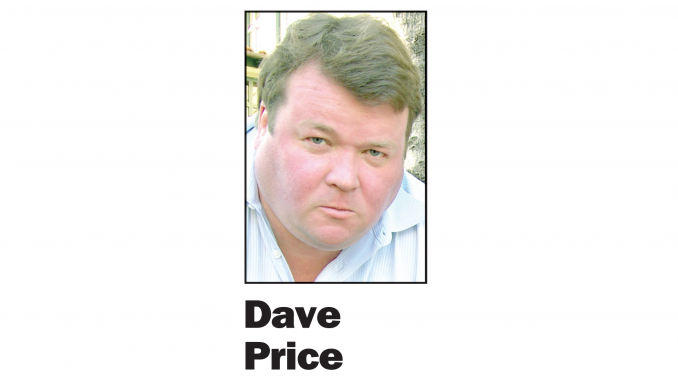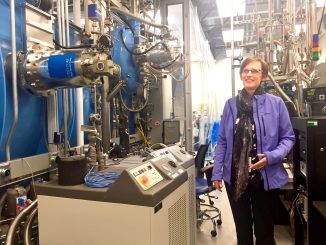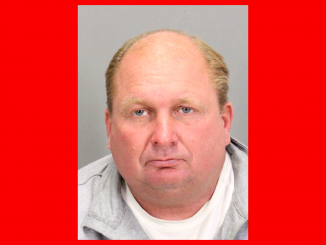
OPINION
BY DAVE PRICE
Daily Post Editor
First, I’d like to thank all of the people who wrote to us about their memories of watching the first moonwalk. We received many stories that were sweet, nostalgic, humorous and proud of a nation that could accomplish such a monumental feat. Those stories were printed on Saturday, the 50th anniversary of the Apollo 11 moon landing.
To see what things were like in Palo Alto at that time, I went to the library to look at the microfilms of the now-defunct Palo Alto Times, the main newspaper here in 1969.
I was struck immediately by the poor quality of the moonwalk photos, and then realized that the newspaper was getting the pictures off of the TV, which also gave us grainy, black and white images of that extraordinary moment. The beautiful, crisp color photos wouldn’t be available until the astronauts returned and their film was developed.
The moonwalk happened on a Sunday, but days before there was a controversy about whether Americans should get Monday off as a holiday. President Nixon proposed a “Moon Day” holiday, but businesses didn’t go along by a margin of 4 to 1. The Times reported that local employers such as Hewlett-Packard, Varian, Ampex, Raychem, Watkins-Johnson and the Stanford Research Institute were open on the Monday after the moonwalk. “The work must get out,” said one employer. Workers at IBM, Syntex and Teledyne got the day off.
Palo Alto city offices were closed too, though the paper reported that the dump would remain open.
Mayor Edward Arnold issued a proclamation encouraging city employees to engage in a “day of participation,” though the article didn’t elaborate on what that would involve.
There were other things happening in the mid-Peninsula in July 1969, however.
Widening Arastradero Road
The Palo Alto Planning Commission was calling for the widening of Arastradero Road from two lanes to four to accommodate expected traffic from the Stanford Research Park. “We can’t drag our feet, however. We should move ahead with deliberate speed,” said Palo Alto Planning Director Louis Fourcroy. Things changed over the years, though, and in 2008, Palo Alto officials decided to reduce Arastradero from four lanes to two to make the area safer for bicyclists and pedestrians.
Also in July 1969, Santa Clara County officials were taking the early steps that would one day result in VTA. A Times story explained that the county was buying up private bus companies in various cities, including Peninsula Transit Lines in Palo Alto, and would consolidate them into a county-run transit authority by 1971.
The housing crisis was in the news 50 years ago. Then-vice mayor Jack Wheatley was quoted in a story opposing plans for a middle- and low-income housing development on a 6.7-acre site at University Avenue and El Camino Real, which was then the city’s corporation yard. He favored a “low-rise” office center. Neither the housing nor the offices would be built there.
Police raid charity party
One of the most interesting stories in July 1969 was the police raid on a Los Altos Hills charity party. The event was intended to raise money for a charity that helps the deaf, and the attendees were the area’s upper crust. Unbeknownst to them, undercover detectives infiltrated the party and discovered gambling was taking place. Detectives said they observed “a dart and balloon game, blackjack, chuck-a-luck (a dice game), a hoop game and shuffleboard.”
Deputies arrested 12 people and their names all appeared on the front page of the Times. Bail for each was $312.
A couple of national stories caught my eye.
• On July 15, a day before the launch of Apollo 11, Vice President Spiro Agnew proposed a new goal for America — landing on Mars before 2000. Agnew chose Mars over Venus as the next celestial body to visit because “it seems a more compatible planet.” The surface temperature of Venus is 864 degrees, so Mars was a good alternative. Agnew’s goal of reaching Mars was forgotten and he resigned in disgrace in 1973 after investigators in his home state of Maryland discovered he had taken kickbacks from government contractors during his time as governor of that state.
• Sharing the front page with the moonwalk was the report out of Martha’s Vineyard that Sen. Ted Kennedy was charged by police with leaving the scene of an accident “in which an attractive blonde secretary was killed,” as the Associated Press put it. On July 19, a day before the moon landing, Kennedy’s car plunged off of a small wooden bridge and landed in a tidal pond on Chappaquiddick Island. Kennedy said he dove into the water repeatedly to try and save the secretary, Mary Jo Kopechne, but was unsuccessful in retrieving her body. He didn’t report the accident to police until eight hours later.
Odd how Chappaquiddick happened at the same time his brother’s call for reaching the moon would be fulfilled. The Times political writer, John Keplinger, wrote, “The presidential aspirations of the last surviving Kennedy brother could well have been scrapped when the car he was driving plunged off a narrow bridge into a pond early Saturday morning.”
And in those July 1969 editions of the Times were sobering obituaries of young men from our area who were killed in the Vietnam War.
In one obit, the Menlo Park father of an Army private killed by a North Vietnamese land mine told the Times his son enlisted at age 19 because “it was the thing he wanted to do — serve his country.”
‘We’ve gone far enough’
Getting back to Apollo 11, the enthusiasm of Palo Alto residents over the landing was over the moon.
The Times did a man-on-the-street reaction story and was told by Mrs. E.A. Roche, “I have great faith that the moon landing is going to be the answer to the birth control problem. People will one day be able to live on the moon.”
“It’s hard to believe,” said Hal Garrish, a computer room supervisor. “I don’t think we have come to the full realization of the fact that man is really walking on the moon. The press has watered down this great accomplishment.”
Mayor Edward Arnold remarked, “Man’s pride should be balanced with humility at this further penetration of God’s universe.”
But many gave the moonwalk a qualified endorsement.
“It’s a great thing for both our country and the world,” said Betty Ferguson of Mountain View. “I hope that now we can slow down our space program and spend the money on other things we also need.”
Craig Stuppi, a Stanford law student, told the Times, “I think the landing was good, but I think we’ve gone far enough.”
Editor Dave Price’s column appears on Mondays. His email address is [email protected].
Other Post stories on the 50th anniversary of the moon landing
• Where were you when man walked on the moon? The Post asked its readers
• Local residents played a key role in moon program
• Armstrong and Aldrin came to Palo Alto for different reasons
• Front page reporting man had landed on the moon
• Locals restore Apollo 11 computer, get it to run moon landing program




Funny how some of the issues in town today, like housing and traffic, were issues back then. Thanks for the trip back in time.